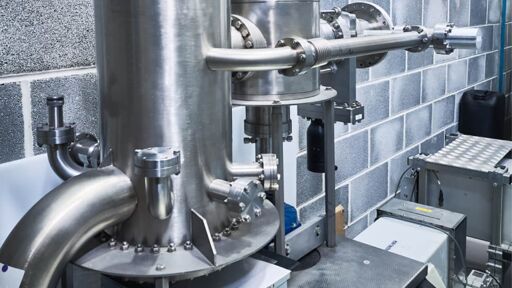The ability to generate tritium within the reactor is crucial. A sustainable fusion energy system needs to produce more fuel than it consumes
I clearly don’t understand the fusion process. Deuterium is used to fuse and create tritium?
The reactor core also features an electron-screened environment. This design reduces the energy needed to overcome the Coulomb barrier between particles, which lowers required fusion temperatures by several million degrees and allows for higher performance in a compact size.
What’s this “electron screened environment” they are talking about? They can’t purge all electrons from molecules when they enter can they? That would make the molecule instable. But it sounds like they are doing something similar in order to reduce the temperature required for fusion.
A Deuterium-Deuterium reaction produces Helium-3 and a neutron, or Tritium and a proton. Roughly even odds on which products you’ll get. And a ton of energy. A Deuterium-Tritium reaction produces Helium-4, a neutron and a shitton more energy.
Basically, the DD reaction is used to create fuel for a more predictable and energetic reaction. From the article, seems they’re also bombarding Lithium with neutrons from the DD reaction to create more Tritium. Problem with Tritium is that while it does occur naturally, it’s extremely rare and volatile. Tritium has a half-life of about 12 years, so if we want to use it in a fusion reactor, we need a feasible way to produce more of it at scale.
It’s all stepping stones to a greater goal though. DD and DT reactions produce neutrons, which will make your entire reactor highly radioactive thanks to neutron activation. D-³He and ³He-³He reactions produce ⁴He and protons, which are actually able to be controlled by magnetic fields and won’t irradiate your whole shit. But then sourcing ³He becomes your new biggest problem.
Produce more fuel than it consumed… I’m pretty sure that’s breaking a law somewhere… And not the human kind…
It produces more rare tritium fuel than it uses from other fuels that it consumes. So in theory as long as you keep supplying the common fuel you get the tritium you need for the higher power reactions.
Any element below iron is technically fuel for fusion.
Yes, but assuming the system has 100% perfect efficiency (which is impossible) it’ll only produce the same amount of fuel each time, not more than was put inside.
Problem also is that fusing becomes progressively more difficult the heavier the element gets, requiring more energy to create the fusion. So really, if we’re looking at a perfect efficiency, and consider the potential energy from the entire process until fusion isn’t possible anymore, you’ll only ever get as much energy (fuel) out of it as the fuel (potential energy) you put into it.
I really take issue with such headlines because people who aren’t scientifically literate will be mislead and become stupider as a result.
They’re not producing fuel to continue the same reactions, which would be a violation of conservation of energy. They’re producing fuel to run a different reaction. Less “perpetual motion machine,” more “spinning a turbine to charge a battery to run an EV.”
Edit: A better analogy is cracking water to capture the hydrogen, to later burn it in a fuel cell.
Nonetheless, being able to produce tritium, which is the claim that appears in the headline and the article, is very useful, in part because many reactors use it as a fuel source.
There is only one place where I see “more fuel” show up, which is this single sentence:
The ability to generate tritium within the reactor is crucial. A sustainable fusion energy system needs to produce more fuel than it consumes. This development shows a path toward solving that engineering challenge.
I agree that this single sentence could have been better worded.
Just one of the economic impossibilities of fusion, is that tritium is a byproduct of fission reactors.
hybrid fission/fusion
Not that I understand what they are doing or what their design is, but they seem to be doing a lot of fission/breeding applications without touting any energy production benefits. “Fusion is just interesting plasma physics experiments without any regard to economic practicalities”



